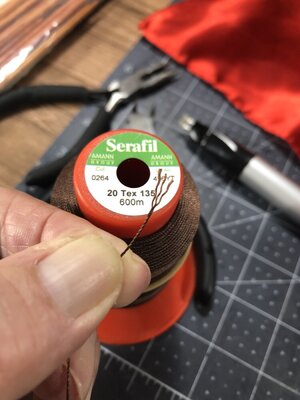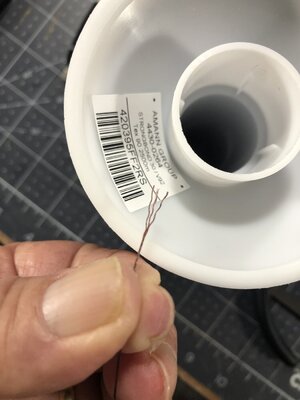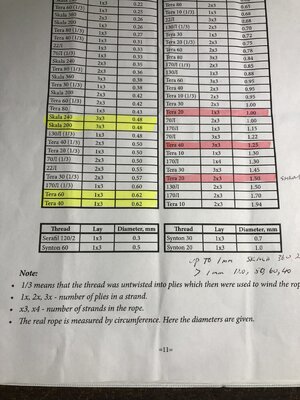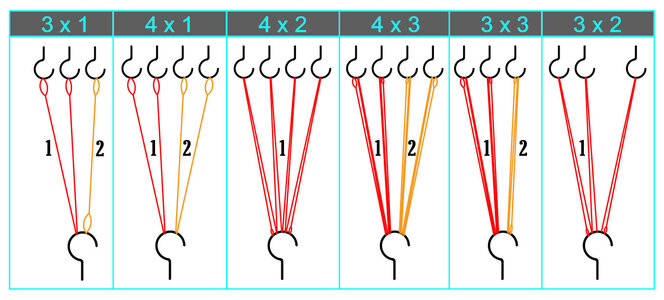Good morning, Paul, maybe you can clear something up for me concerning rope terminology.
In the first two photos I show examples of some of my source threads, note each thread or 'strand' is made up of 3 plies. The plies themself are manufactured in the Z direction thus is why they have to be unwound and wound back to the left or S position to make Z laid rope. Ok so according to the "notes" section in the photo, all of my ropes would begin with a Lay call of 3x (1,2,3,4), the 1,2,3,4 being the number of strands or threads.
I am totally confused by other lay calls such as 1x3, 1x4, 2x1, 2x2, 4x1 4x2 etc. All of the source threads I have ever purchased have a 3-plie construction of the strands and they are Z laid. Have you heard of source threads with only 2 plies or 4 plies or do people actually take apart the source thread into its plies then reconstruct the plies into the other lay calls??
Or am I totally out of my mind not understanding something that seems simple to others??



In the first two photos I show examples of some of my source threads, note each thread or 'strand' is made up of 3 plies. The plies themself are manufactured in the Z direction thus is why they have to be unwound and wound back to the left or S position to make Z laid rope. Ok so according to the "notes" section in the photo, all of my ropes would begin with a Lay call of 3x (1,2,3,4), the 1,2,3,4 being the number of strands or threads.
I am totally confused by other lay calls such as 1x3, 1x4, 2x1, 2x2, 4x1 4x2 etc. All of the source threads I have ever purchased have a 3-plie construction of the strands and they are Z laid. Have you heard of source threads with only 2 plies or 4 plies or do people actually take apart the source thread into its plies then reconstruct the plies into the other lay calls??
Or am I totally out of my mind not understanding something that seems simple to others??












